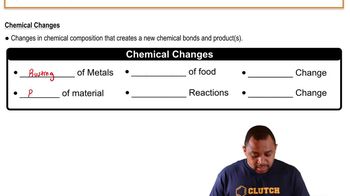Here are the essential concepts you must grasp in order to answer the question correctly.
Chemical Equilibrium
Chemical equilibrium occurs when the rates of the forward and reverse reactions are equal, resulting in constant concentrations of reactants and products. In the given reaction A + B ⇌ AB, the system reaches equilibrium when the formation of AB from A and B occurs at the same rate as the decomposition of AB back into A and B. Understanding this concept is crucial for predicting how changes in conditions affect the reaction.
Recommended video:
Chemical Equilibrium Concepts
Le Chatelier's Principle
Le Chatelier's Principle states that if a dynamic equilibrium is disturbed by changing the conditions, the system will adjust to counteract the change and restore a new equilibrium. In this scenario, opening the stopcock allows the mixing of reactants and products, potentially shifting the equilibrium position depending on the concentrations of A, B, and AB in the combined vessel.
Recommended video:
Concentration Changes
Changes in concentration of reactants or products can influence the direction of a chemical reaction. When the stopcock is opened, the concentrations of A and B may decrease while the concentration of AB may increase, depending on the initial amounts in each vessel. This shift in concentration can drive the reaction either forward or backward, depending on the relative amounts of each species present.
Recommended video:





